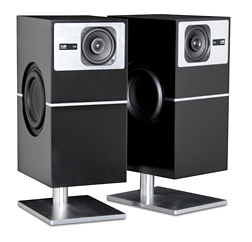Design History
1979-Aeolian Tri-Amp
My first product, a two-speaker, six-amp monster. I have lost contact with the dozen or so original owners; I can only hope they are all still working, but fear they have gone to Hi-Fi Heaven. No calls for warranty or service. if you have any information please contact me.
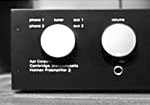
1982- APT Holman II Pre-Amp
The last product of Tom Holman's APT Corp, before he split for the coast to form THX at LucasFilm. It started life as a slim profile high-power integrated amp, with switching power supply. It was my idea to create, from the already-purchased parts, a smaller APT Preamp instead. A better power supply, op-amps and a shorter, simpler, signal path made the baby better sounding than its older sibling.

1984-1988 Genesis
Genesis was a spin-off of EPI, a New England speaker manufacturer once 2nd largest in the world. Genesis specialty was robust East Coast Style wood box loudspeakers. I was Product Manager and then Designer during the Company's transition to a more modern, polished product line. To the qualities of affordability and gutsy sound I added smoothness, imaging and physically attractive design.
That made Genesis a major competitor in home Hi-Fi. My first use of an inverted metal dome tweeter was a direct outgrowth of both Win Burhoe's tweeter from EPI and my own work with Focal and Jordan Drivers. A fortunate confluence.
The G7 was a good selling entry-level speaker doing battle with the Boston Acoustics' BA40, Wharfdale Diamond and Mission 70. This was Genesis' first OEM Driver speaker. Until then Genesis had always built their own drivers including tweeters and I always appreciated that about Genesis.
The G44 poly cone, metal dome, system was called by Peter Mitchell the 'best-balanced speaker' he had ever heard. A major step forward by Genesis, the 44 was gorgeous in real wood cabinets made by Peter Snell's cabinet shop.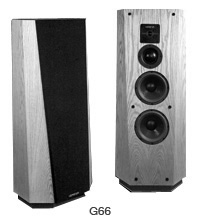
The G66 was a tall, stunning 4 driver 3-way with a multi-angular cut-crystal looking cabinet also from Peter Snell's shop. It was Genesis' swan song.
Avid was originally a respected New England speaker maker that went belly-up and was purchased lock, stock and barrel by Genesis. Avid became their second tier product line. Designing these speakers was the tin pan alley of speaker design. Like the song writers of old, we just kept cranking out Avids for various stores, regions, what-have-you, with an ever changing array of cabinets, drivers, x-over parts or whatever was procured on the surplus market and dumped in my lab. I remember once having to design a great speaker before lunch for a large order to be shipped the following day.
NEAR
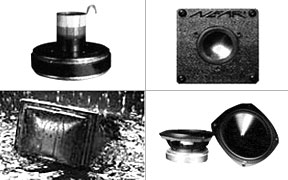 The NEAR saga is another chapter about re-make, re-model and resuscitating an old and respected brand name. Here the name is Bozak, and NEAR was the old Bozak line in everything but name. When I first met NEAR they were building replicas of 1950's era speakers, as large as refrigerators and about as sleek. They were, however, also building their own line of metal cone drivers with very good motors and cast frames. That alone is an impressive undertaking and one I fully appreciated. The Bozak drivers were not fulfilling the promise of their parts and I was able to change that with a complete redesign.
The NEAR saga is another chapter about re-make, re-model and resuscitating an old and respected brand name. Here the name is Bozak, and NEAR was the old Bozak line in everything but name. When I first met NEAR they were building replicas of 1950's era speakers, as large as refrigerators and about as sleek. They were, however, also building their own line of metal cone drivers with very good motors and cast frames. That alone is an impressive undertaking and one I fully appreciated. The Bozak drivers were not fulfilling the promise of their parts and I was able to change that with a complete redesign.
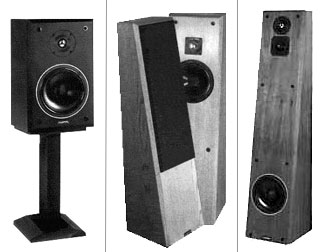
I designed every part of the NEAR speakers. Drivers, cabinets, cross-overs, systems, voicing. The reviews were many and effusive. At the heart of every NEAR speaker, at the core of each driver, was my patented Liquid Magnetic Suspension.
The 50M and its variant initials, was, in the words of a major competitor, "a home run right up the middle”. Reviews and sales figures agreed with this statement. We certainly gave some very big manufacturers a scare for several years. The 10M was an equally well-received mini-bookshelf that weighed as much as a brick and sold for the ridiculously low price of $280/pr. Bob Ludwig was reportedly in possession of a set of these for quite some time at his mastering lab.
The drivers had amazing durability (we had tested one unit underwater for over a year) and superb sound quality. These were the same exact drivers used in the high-end home speakers. New management sold NEAR to a large conglomerate and they all but disappeared not long after I had left the company.
Boston Acoustics
The China Series A12, A20, A22, and A28 were supposed to be a limited run export speaker. They were big, expensive and somewhat retro. They surprised everyone when orders would not die. Production continued for several years instead of a few months.
The VR 960 and 970 were Boston's top of the line home theater tower speakers with amplified sub-woofers incorporated into the design. I was Product Manager and Senior 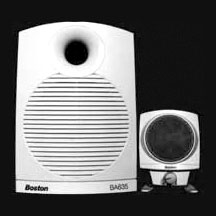 Engineer and worked with engineers Dave Fokos and Michael Chamness. The project required the development of several new drivers. A very well received product, the VR960 won Consumer Electronics' Product of the year award in 1999.
Engineer and worked with engineers Dave Fokos and Michael Chamness. The project required the development of several new drivers. A very well received product, the VR960 won Consumer Electronics' Product of the year award in 1999.
The BA635 was designed and built originally for Gateway Computers. It was a huge success and became the basis for most of Boston's desk-top audio products, including the BA735, USB and BA7500.
I also designed the SST (AKA the BA7500), Boston's flat panel speaker. I and others from Boston share the patent. This is really a small regular speaker with a flat diaphragm.
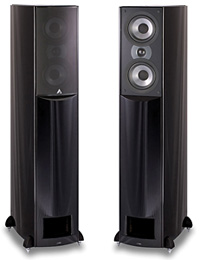
Atlantic Technology
The AT1 uses Atlantic's proprietary H-Pass bass system. This is Peter Tribeman's first foray into high-end two channel systems, and Stereophile gave it a Class B recommendation. Read the review here. Visit the Atlantic Technology site here.
Cue Acoustics
I started working with the innovative startup Cue Acoustics in 2010, and our partnership has already produced some amazing audio products.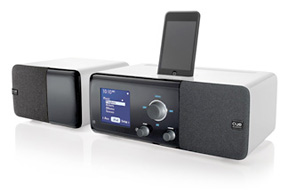
The Cue Radio Model r1 is a compact iPod dock, radio and alarm clock with amazing sound quality. The parts used are simply great; I got to go in and retune the DSP, crossover, etc., and make it sound even better! Better bass and voice range, and 10 dB output increase. Same Cue smooth, clean and clear true fidelity sound.
The PS1 Speaker System brings hi-fi to the world of wireless audio. These bookshelf speakers are powered (over 300 watts per pair) and allow for wireless connectivity via DLNA technology. They deliver amazing bass—down to 27Hz—due to a unique driver configuration utilizing a passive radiator on either side of the cabinets and a down-firing woofer built in to the bottom of each PS1.
